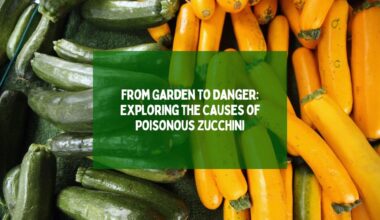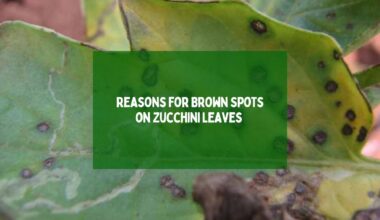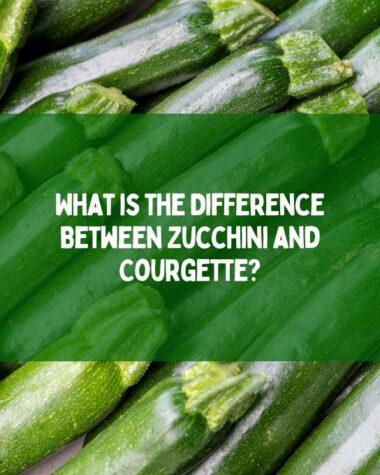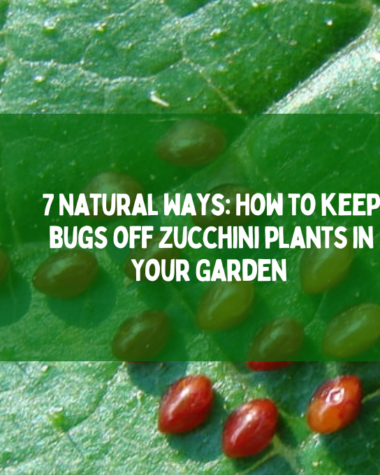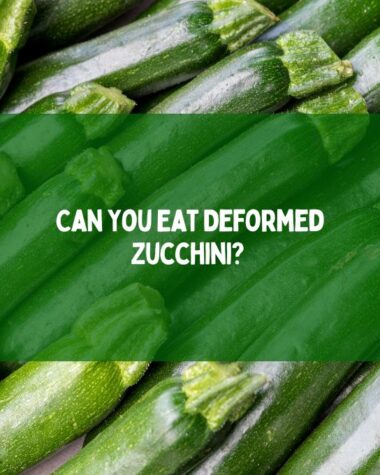Black spots on zucchini leaves can be a sign of various diseases or fungal infections. One of the most common causes of black spots is a fungal disease called powdery mildew. It typically starts with white or grayish powdery patches on the leaves, which then turn into black spots as the disease progresses.
Zucchini plant leaves can be affected by various diseases, including powdery mildew, downy mildew, and bacterial wilt. Symptoms may include yellowing, wilting, and the appearance of spots or lesions.
In this article, I will discuss the main reasons why my zucchini plant leaves have black spots on them.
8 Reasons Of Black Spots On Zucchini Leaves

The following 8 reasons of black spots on zucchini leaves are given below;
Related Reading
- What is Zucchini Summer Squash and How to Plant Zucchini from Seeds?
- When to Transplant Zucchini Seedlings? Let’s find out
- 5 Reasons Why Zucchini Leaves Turn Brown
- 10 Zucchini Growing Tips for Growing Healthy and Productive Plants
1. Fungal Diseases
Fungal diseases are a common cause of black spots on zucchini leaves, including powdery mildew and downy mildew. Powdery mildew appears as a white or grayish powder on the leaves, which can turn into black spots as the disease progresses.
This fungal infection thrives in warm and humid conditions, making it difficult during the summer months. Downy mildew is another fungal disease that can cause black spots on zucchini leaves, along with yellowing and wilting.
Prevention
It is important to properly examine and treat these fungal diseases to prevent them from spreading to other plants and causing significant damage to the zucchini crop.
2. Bacterial Diseases
Bacterial diseases cause black spots on zucchini leaves, with bacterial wilt being a common problem. This disease can cause leaves to wilt and turn yellow, as well as black spots to appear on the leaves.
A bacterium that cucumber beetles spread is responsible for bacterial wilt. The disease can be difficult to control once it has infected a plant, but prevention is key.
Prevention
Practicing crop rotation, using insecticides to control cucumber beetles, and removing infected plants from the garden can help prevent the spread of bacterial wilt and other bacterial diseases.
3. Viral Infections
Viral infections can also be the cause of black spots on zucchini leaves, although they are less common than fungal or bacterial infections. Aphids spread the virus, which can also harm other plants in the cucurbit family like melons and cucumbers.
One of the most common viruses that affect zucchini plants is the cucumber mosaic virus, which can cause yellowing and mottling of the leaves as well as the appearance of black spots or streaks.
Prevention
Unfortunately, there is no cure for viral infections, and infected plants should be removed and destroyed to prevent the virus from spreading to other plants. Preventative measures, such as using insecticides to control aphids, can help reduce the risk of viral infections in zucchini plants.
4. Environmental Stress
Environmental stress causes black spots on zucchini leaves. Excessive moisture, poor air circulation, and high humidity can create ideal conditions for fungal and bacterial infections to develop, leading to the appearance of black spots on the leaves.
Exposure to extreme temperatures or sunlight can damage the leaves and make them more susceptible to infection.
Prevention
Proper plant care, including regular watering, good air circulation, and protection from extreme weather conditions, can help prevent environmental stress and reduce the risk of black spots on zucchini leaves.
5. Nutrient Deficiencies
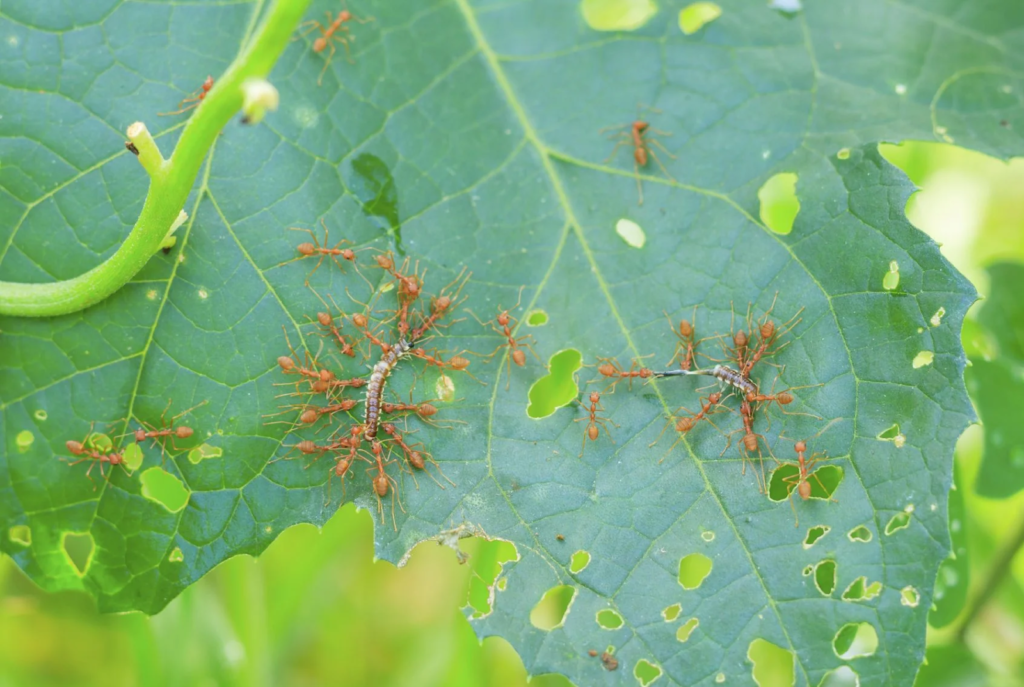
Nutrient deficiencies can also lead to the development of black spots. A lack of essential nutrients, such as nitrogen, phosphorus, and potassium, can weaken the plant and make it more susceptible to fungal and bacterial infections.
Zinc and iron deficiencies can also cause black spots or streaks on the leaves.
Prevention
To prevent nutrient deficiencies, it is important to provide the plant with proper fertilization and soil amendments. Regular soil testing can help identify any nutrient deficiencies and inform a fertilization plan. Adequate sunlight and water are also crucial for proper nutrient uptake in the plant.
6. Insect Damage
Insect damage For example, squash bugs and cucumber beetles can both cause damage to the leaves, which can lead to the development of black spots. Squash bugs feed on the leaves and can cause wilting, yellowing, and blackening of the leaves.
Cucumber beetles can transmit bacterial wilt, which can cause black spots on the leaves. Spider mites can also cause black spots on the leaves by sucking the sap out of the plant, which can damage the leaves and cause discoloration.
Prevention
Proper pest control measures, such as using insecticides and practicing crop rotation, can help prevent insect damage and reduce the risk of black spots on zucchini leaves.
7. Overwatering Or Poor Drainage
Inadequate or inconsistent watering can also stress the plant, causing leaf discoloration. Poor drainage can lead to the development of black spots on zucchini leaves. Overwatering can also cause the leaves to wilt and turn yellow.
When plants are overwatered or the soil does not drain properly, excess moisture can accumulate in the soil and create various conditions for fungal and bacterial infections to develop. This can cause the leaves to develop black spots or lesions.
Prevention
It is necessary to ensure that the soil is well-draining and that the plants are not watered too frequently. Proper watering practices, such as watering deeply but infrequently, can help prevent black spots on zucchini leaves caused by overwatering.
8. Chemical Damage From Pesticides Or Herbicides
When these chemicals are not applied properly or in the correct amounts, they can damage the plant tissue and cause the leaves to develop black spots or lesions. This type of damage can be especially severe if the chemicals are applied during periods of high temperatures or drought stress.
Prevention
Follow all label instructions when applying pesticides or herbicides, including using the correct amount and applying them during the appropriate weather conditions. Avoid applying these chemicals too frequently or in excessive amounts.
Related Reading
- How to Grow Eggplant on a Trellis?
- How to Grow Pumpkins in Pots?
- The Fascinating Story of Purple Tomatoes: Genetics and Cultivation
- Effective Carrot Rust Fly Control: Tips To Combat Rust Fly Maggots
- Fertilizer for Indoor Plants: Nourishing Your Green Haven
Conclusion
Fungal and bacterial infections, environmental stress, insect damage, nutrient deficiencies, overwatering or poor drainage, and chemical damage from pesticides or herbicides are just a few causes of black spots on zucchini leaves.
Identifying the underlying cause of the black spots is necessary for proper treatment and preventing further damage to the plant. Some preventative measures that can be taken include proper watering and fertilization, adequate pest control, and maintaining good air circulation around the plants.
Thanks for your attention!
